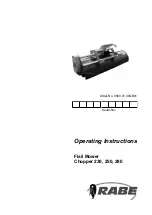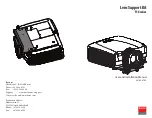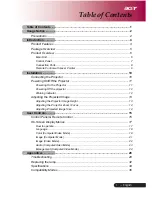
66
SINGLE SPEAKER MODE
POSITION HEAD
+30
AND PRESS OK
The listener rotates to 1 o’clock (or moves the speaker to 11 o’clock), presses
OK
, and the next
sweep will sound. This process will continue until the listener has turned through to the final
sweep position of -30° (or moved the speaker to the final position of +30°) and heard the final
sweep.
If
SAVE AT END
was set to
YES
, the text entry screen appears, the listener’s name and room
are entered, and the PRIR is saved to location 64. It can then be copied internally or to an SD
card.
If
SAVE AT END
was set to
NO
, a subwoofer can now be placed at a favorable location and
measured. Set
SAVE AT END
to
YES
(unless you wish to make further measurements beyond
the subwoofer). Set
SPEAKER MODE
to
ALL
. Press
CAL
, switch
SW
to
ON
and all other
channels
OFF
, and run the calibration. Press
SPK
, verify that only
SW
is set
ON
, and run the
sweep. After the sweep, the diagnostic screens will appear, but they do not pertain to the full set
of measurements and are typically ignored. Press
OK
for each screen. Then the channels on/off
screen appears. Set to
ON
all the channels which you wish to retain in the PRIR (typically all
eight). Press
OK
, , enter the
ID
and
EV
data, press
OK
again, and the PRIR is saved.
LR, LsRs, LbRb
-- These procedures are designed to simplify the generation of a 5.1 or 7.1
virtual system from a real stereo pair of speakers.
LR
is not typically used alone, but is used as the first step in the
LsRs
or
LbRb
procedures.
LR
measures the left and right speakers and generates a virtual centre speaker automatically which
is the equivalent of the left and right. If the real left and right speakers are centred on a screen,
the sound from the virtual centre speaker will appear to come from the screen. When the
channels on/off screen appears at the end of the measurement process,
C
is set to
ON
to save the
created centre channel.
Follow the instructions for LsRs or LbRb below which include the
LR
step.
LsRs
-- In this mode the user generates a surround pair of speakers from an existing stereo pair.
The left and right measurements are made, and then the listener turns 180° so that the stereo pair
is behind, and another measurement is made. The sound of the stereo pair is duplicated in the
rear. The result is a 5.0 virtual speaker system. For 5.1, a subwoofer can be added in a further
measurement, or direct bass can be used.
The angle of the virtual surround speakers can be varied without moving the real speakers. The
user backs closer to the real speakers for a wider angle, and moves farther away for a narrower
angle. The Realiser will compensate for level differences caused by the change in proximity.
Delay will not automatically be adjusted, but can be manually adjusted as described elsewhere
in the manual.
The channel assignments should be:
1 L
2 R
3 C
4 SW
(if a subwoofer is to be measured)
5 LS
6 RS
















































